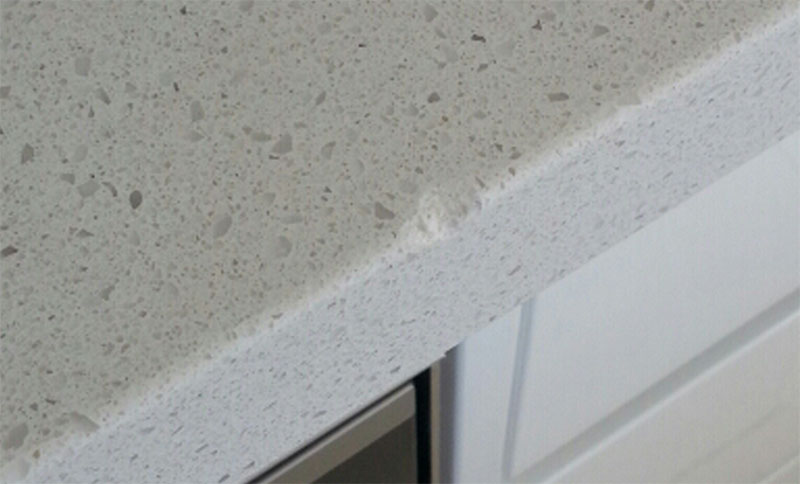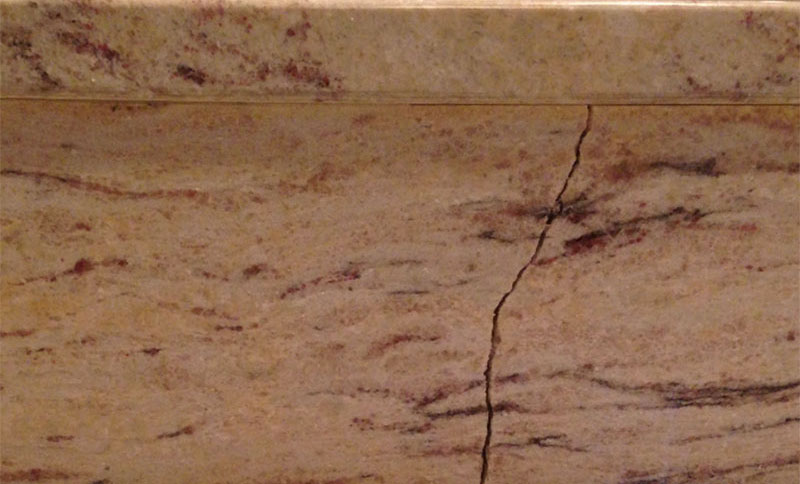Marble & Stone Repairs Brisbane & Gold Coast
Please Select which Service you require for Detailed Information
Are Your Stone Surfaces in Need of Professional Restoration?
Call The Marble Everlast Team Today On 0401 508 938
Etching Repair
The etching repair process depends on how deep the etching has gone into the marble. First of all we would try and remove the etching with marble polishing powders, we would do this with a hand machine, soft pad and a bit of water. The powder has little bits of grit that tries to scratch away the etching. If this is successful then that’s it. If it is still there then we have to go through with the diamond pads and polishing. The diamond grade depends on the severity of the etch. For example, if it was a two hundred grit we would follow all the way up to a 1500 grit done with a hand machine. Once this has been done we apply polishing powders and machine polish and rinse the area.
Chip Repair
Most chip repairs are done on benchtops and they are done on the side corners or edges of the benchtop and they can be done with fillings of two-pack epoxy to get a colour that suits the benchtop. Also, we can fill it with a gel that can be cured with a UV light. Once we have done the UV light process we use fine emery paper to shape the repair and go through the grades. Once we have gone through the grades we apply polishing paste and polish until it has the same shine as everywhere else.
Stain Removal
Normally would consist of poultice. Poultice would be applied as a paste format. A powder that is mixed up as a paste. This is applied to the stained area. We would apply polythene and tape off the area of the polythene so everything is sealed off. The whole idea of this is to make it sweat and make the stain rise and come out open the pores and make it come to the top of the stone. This is normally done over a period of 24-48 hours. Once this has been done we remove the poultice and rinse the area with carbon soda.
Really stubborn stains
Staining all depends on how early you catch the stain. If the staining has been there for two years the chances are it won’t come out. The best results for stain removal are when its less than 3-4 months old. It all depends on how far it has penetrated into the stone.
Pitting Repair
Pitting repair is not very common. For pitting repair we get a suitable colour of resin and trowel it into the actual tile. Once we have levelled it we will go along with a hand machine and use carborundum or a suitable diamond that will grind away the excess of the resin until everything is smooth. We then go through with the diamonds until we have the finish that you are after.
Mould and algae removal
The process for mould and algae removal varies and depends on what the actual material of the stone is. We need to ensure that a suitable solution is applied for the stone type. For example on a sandstone area, once the product has been applied it is left for a couple of minutes and then we will power wash it.
Hard watermarks
Hard watermarks are often approached the same as etching. For watermarks the majority of the time we will get rid of them with an abrasive marble polishing powder using a hand machine.
Efflorescence
Efflorescence is a little bit more tricky. Efflorescence is a chemical reaction from the bed of the sand that has risen through the material. It has a silvery kind of white effect on the surface of the material. For this, we use a special product that is applied and agitated in a manual process. This dwells for a while and is removed, vacuumed and the area cleaned.
Yellowing
The reason why yellowing is mainly seen on marble is because of the polyurethane sealer that has been applied to the stone. It is normally seen on table-tops and furniture and is used because it gives a hard finish that is scratch-resistant. The downside is after a few years it starts to go yellow. This is because a chemical reaction in the polyurethane is past its used by date where it goes yellow and starts to flake off. To remove it we have to scrape this off by hand and doing this will scratch the surface. After this, we have to resurface with diamonds and polish.
Uneven tiles or lippage
Uneven tiles are quite common in Brisbane. The industry term used for uneven tiles is lippage. When it comes time to polishing floors, most floors will have lippage. We can level the whole floor using metal bonds or harder diamonds to remove the lippage and leave everything flat, giving you a showroom floor finish. We flatten the lippage with metal bonds on the floor machine and then with a diamond polish going through the grades.
Stun marks or bruising
Basically bruising happens when you drag or drop a table or chair, this marks the surface of the marble or stone. It’s like our skin if someone was to punch you a bruise would come about, this is the same as the marble. It creates a white mark that is hard to remove. Removing these marks is only possible with diamond grinding and polishing but the chances can at times be fairly slim for this to be removed.
Water rings and spots
Basically the same as etching. These marks are caused by people who have put their glass or cup on the counter and there was an acidic product has been there with a high ph and it has etched into the marble. The process to remove this is the same as etching.
Dullness
Dullness is basically wear and tear, the way to overcome this is to apply polishing powders and machine polish and see if this revives the stone back to the former glory. If not diamonds are used to resurface the surface.
Regrouting
For a proper regrout we have to remove all of the old grout cut out all the old joints and then apply a suitable grout.
Silicon
Remove all the old silicon in the showers or sink areas and floors, and reapply suitable silicon.
Common stone surface types include Marble, Granite, Travertine, Terrazzo, Quartz , Sandstone & Engineered (man made) Stone
Get Started & Book Now!
Brisbane's local stone restorations & repair specialist
*The information provided on this site about our processes and products used is intended for general guidance only. The methods for stone work can vary significantly depending on the specific characteristics and condition of your stone surface. Factors such as the type and composition of the stone can influence the appropriate process. Following a thorough evaluation, our team will advise you on the best approach for your stone surface.







